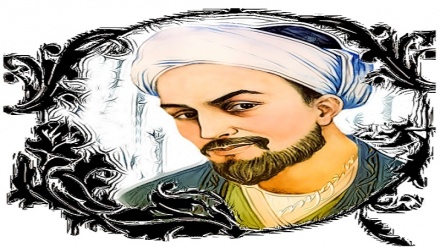Iranian notables, sources of global honor (189)
Welcome to this week's episode of the series Iranian Notables, Sources of Global Honor. Today, we study the impact of the great Iranian mystic, Hussein ibn Mansour Hallaaj, on the renowned Iranian poet, Attar.
We continue to discuss the biography of one of the exceptional Iranian mystics, Hallaaj, who lived in the 3rd Century AH. He took the world by storm to an extent that even after the passage of centuries, Iranian and Western researchers continue to write about his life and works. He maintained many followers in the different cities of Iran, India, Turkistan, and China.
As a reminder, it was pointed out that despite the utmost efforts of Iranian and non-Iranian researchers and historians, the life of the pre-eminent Iranian mystic of the 3rd Century AH, Hussein ibn Mansour Hallaaj, has been shrouded in ambiguity. His first name was Hussein, and his father's name was Mansour. Ancient texts have not specified his date of birth. However, some researchers argue that he was born in the year 858 AD, with some others opining that he was born in the year 862 AD. Hallaaj was born in Toor Village within Fars region. In his childhood, he accompanied his family who headed for, and settled in Iraq. He earned the title of Hallaaj, which means cotton-beater. As of a young age, Hallaaj went on a number of journeys in order to acquire knowledge, attending the classes of great lecturers of his day, such as Amr ibn Osman Makki, and the prominent Iranian mystic, Junaid Nahavandi; vastly and swiftly expanding his knowledge. Throughout his life, he performed Hajj rituals, thrice. It is said that wherever he went, he was welcomed by a large number of his fans and followers. His popularity scared and provoked the suspicion of Baghdad rulers. Ultimately, the rulers of Baghdad managed to detain and incarcerate him with the baseless and unfounded accusations that they leveled against Hallaaj, and to issue his death penalty after imprisoning him for eight years. He was hanged in the year 309 AH.
Hallaaj is one of the best known figures in Islamic mysticism, and his thoughts and especial fate have always captured the attention of many throughout his lifetime, and after his death. Following the killing death of Hallaaj, many leading Sufis, who agreed with the ideas and thoughts of this renowned Iranian mystic, spoke cautiously about Hallaaj.
Hallaaj has greatly influenced different generations of Sufis and poets, as well as members of the community. The impacts of his views, life, and death on the works of contemporary poets, are observed. The legendary Iranian poets, including Attar, Hafez, and Molavi, in addition to contemporary Iranian poets, such as Shafiee Kadkani, have paid especial attention to Hallaaj, and his fate and ideas.
The famed Iranian poet and mystic of 6th Century AH and early 7th Century AH, Attar Neyshapouri, is one of the poets, whose views and poems bear a significant resemblance to the thoughts and views of Hallaaj. The great influence of Hallaaj on the collection of poems of Attar is hugely evident. In fact, Attar, in one of his signature books, has largely reflected upon the ideas and thoughts of Hallaaj.
The life, thoughts and views of Hallaaj and Attar are very similar to each other. The life of Hallaaj is shrouded in obscurity, while the date of birth and death of Attar are also not clearly known. Both of them lived among ordinary people; were well-aware of, and concerned about people's hardships and woes; did not heed to their unjust rulers; were resolved in their struggles against injustice; avoided hypocrisy; and maintained a significant level of purity and chastity in their lives.
The influence of Hallaaj's views on Attar is sharply evident in one of the latter's signature books. This influence is rooted in Attar's familiarity and empathy with the views of Hallaaj.
MR/ME


